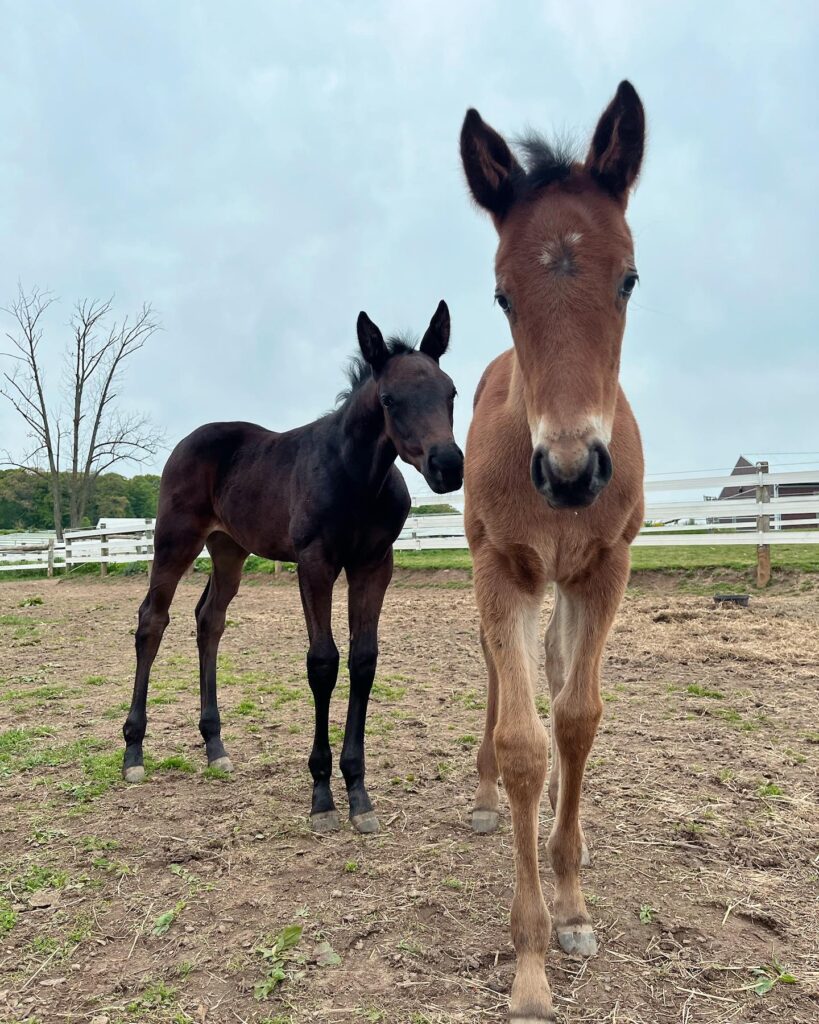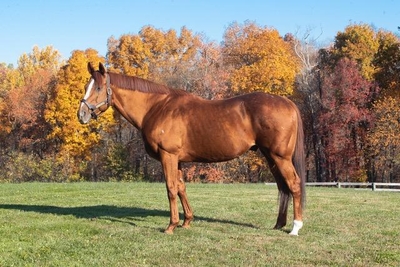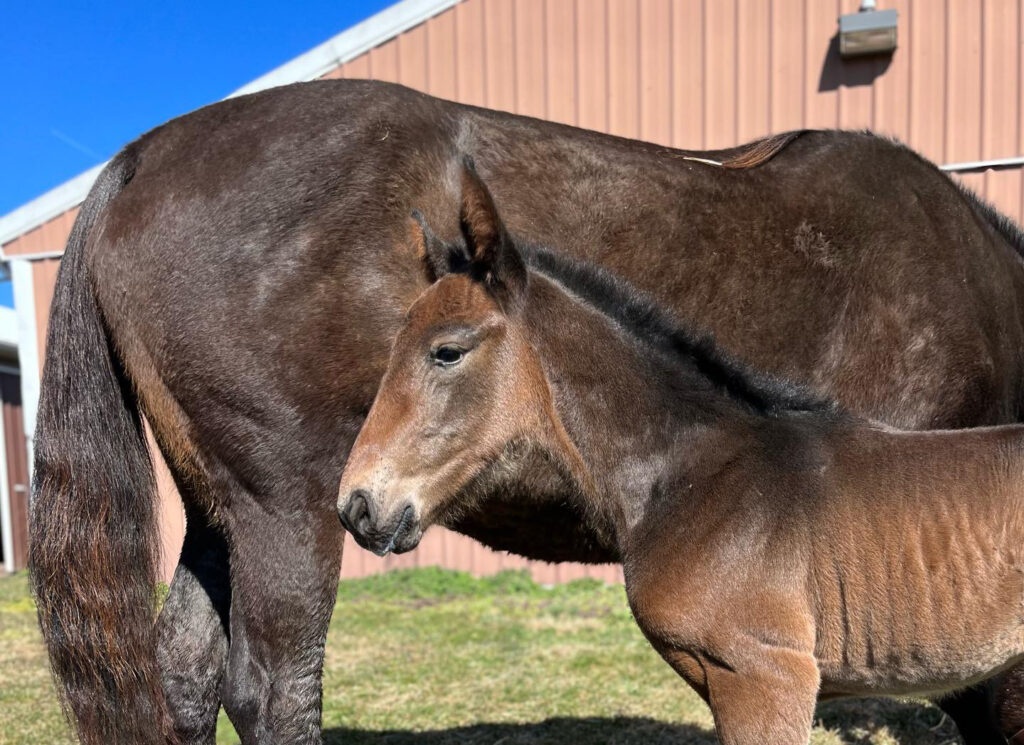Like any profession, rearing and racing horses comes with its own set of jargon and phrases. You may know what equine means, but do you know what a filly, mare, or dam is?
HINT: One horse can (at different times) be all three. And, no, none of them mean a Pennsylvania city, its leader, or the retaining wall holding back its reservoir.
If your lack of equine lingo has you feeling a bit foalish, there’s no need to get your tail in a knot! This glossary unpacks the essential terms that every horse lover needs to know. Additionally, we detail the ins and outs of reading a horse’s pedigree, so you’ll be a pro when it comes to picking and predicting up-and-coming race winners.

Foal
A foal is a baby horse up to one year of age (after which they become a yearling). While it’s still important to pay attention to gender in the early stages of a horse’s life, both males and females are considered foals until they reach the 12-month mark.
Filly
Filly is a term to complement mare and represents everything their older counterparts have outgrown: youth, development, and immaturity. In contrast to mares, fillies are generally considered female horses under three who’ve yet to grow to their full potential.
Mare
Mares are female horses who’ve reached full physical, reproductive, and developmental maturity. Once they reach the age of four, female horses are henceforth considered mares.
Colt
Like their filly sisters, colts are young males yet to reach their ultimate physical and mental capacity. Unlike female horses, however, youthful colts are usually considered babies a bit longer and generally don’t enter adulthood until four years of age.

Stallion
As colts grow older, their owners must make the decision to breed them or not. If the farmer decides to pass on a male horse’s legacy, he’ll go uncastrated and be deemed a stallion.
Generally, stallions are adult male horses past four years of age. Due to being reproductively intact, they often go by the moniker of whole horses. While the names are often used interchangeably, an uncastrated whole horse doesn’t officially become a stallion until they enter the National Stud Registry [1].
Gelding
If the owners decide not to breed their male horse, he will be castrated and become a gelding.
Sire/Sired By
A sire is a stallion who’s been bred in the past and successfully fathered offspring. When speaking of a young racehorse, you may refer to their father as the sire. Additionally, you could say a foal or line of foals was sired by a certain stallion.
By
In addition to saying a particular stallion sired a line of foals, you could also simply say they’re by the father.
Dam
In contrast to sires, we have dams. Dam is how you would refer to the mother of a specific horse. Unlike with sires, however, you wouldn’t say a young foal was “dammed by” their mother. Instead, you should use the phrase…
Out of
When speaking about a mother who has given birth to a particular foal, you would say the young horse is out of the mother. For instance, if Four-footed Fred and Marey Mary had a child, you could say the foal was out of Marey Mary and by Four-footed Fred.

How to Read a Horse’s Pedigree
Pedigrees will often be written in this format: Sire-Dam-Dam Sire. For example, Aspen’s pedigree would be Alarm Detector-To the Good Life – Donato Hanover. Other times, you’ll see a horse’s pedigree laid out more visually in a chart.
A horse’s pedigree chart reads a lot like a flow chart. On the far left, you’ll have the singular horse in question with two rightward offshoots denoting their mother and father. The father (or sire) will be on the top spot of the bracket, while the mother (or dam) will be on the lower side of the bracket.

As you continue rightward, you’ll notice that the tree continues to branch out from each member of the young horse’s lineage. These branches read in the same way as the first brackets: with the sire of the previous horse on top and their dam on the bottom [2].
With this knowledge, you can easily trace back a horse’s pedigree as far as the records or studbook you’re using have kept track of.
Practice Your Horse Lingo and Catch The Foal Cams This Spring
Winter is entering its final stages and its end signals rebirth and rejuvenation across the Keystone State—including in the barns and stables of some of Pennsylvania’s most foremost horse breeders.
This year, The Pennsylvania Horse Racing Association (PHRA) is once again delighted to spread the joys of birth with our Foal Cams. Thanks to our partners at Delaware Valley University and Whysper Wynd Farms, we’ve been able to share not one, but five expecting mares.
Most of our mares have already become dams to new foals. Don’t miss another minute as we start to wind down this month. Tune into our live stream today to join the eagerly awaiting fans and see how many of your newly learned words you can put to the test.
Sources:
[1] “The stallion: character, pedigree, and performance..” Royal Horse. https://www.royal-horse.com/stallion-horse/. Accessed February 22, 2024.
[2] “Horse Breeding Lingo: Pedigree Terminology.” The American Quarter Horse Journal. January 28, 2022. https://www.aqha.com/-/horse-breeding-lingo. Accessed February 22, 2024.











